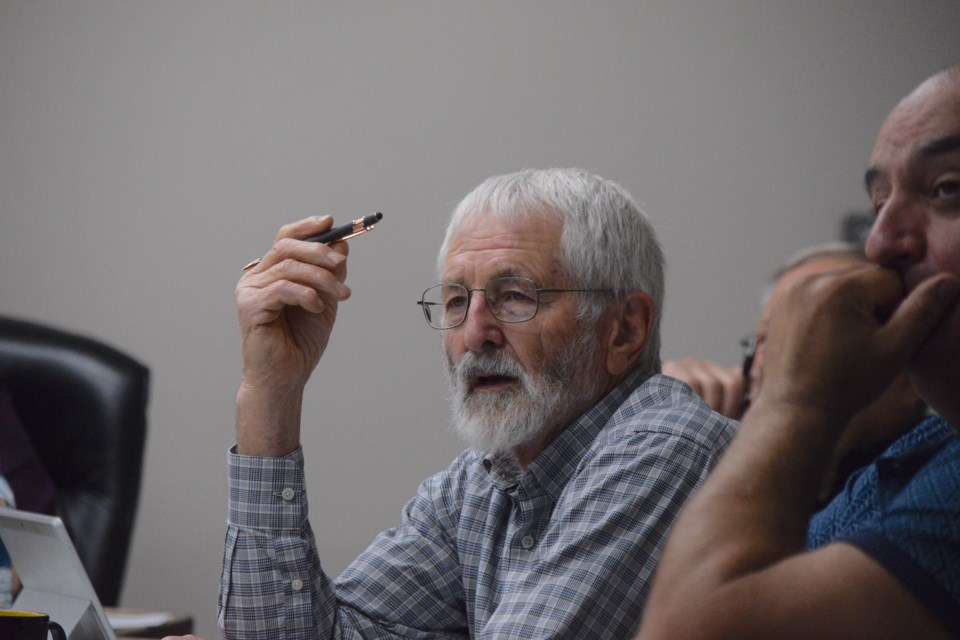BARRHEAD - County of Barrhead council hopes that the Pembina Zone of the Rural Municipalities of Alberta (RMA) will support a resolution requiring the organization to create a committee to examine and understand the challenges of addressing rural crime.
Specifically, the committee will look at the criminal justice system.
By having the Pembina Zone support the resolution council hopes it will have a better opportunity to pass at the organization's fall convention in early November.
During their Oct. 1 meeting, councillors unanimously approved the resolution drafted by county manager Debbie Oyarzun, as instructed at a June meeting.
The RMA is an independent association comprising 69 counties and municipal districts of Alberta. Its purpose is to advocate for issues impacting rural municipalities at the provincial and federal levels.
Related link: Barrhead interim RCMP Detachment commander foresees issues with new pre-charge system
The Pembina Zone includes the county, as well as Athabasca County, Brazeau County, Leduc County, Municipal District of Lesser Slave River, Thorhild County, and Lac Ste. Anne County, Parkland County, Sturgeon County, County of Wetaskiwin, Woodlands County, and Yellowhead County.
Oyarzun said the resolution idea came from a meeting of the Barrhead municipal councils, including the administration, with Alberta's chief prosecutor.
"At the time, the discussion was primarily focused on how the province would implement the pre-charge assessment and prosecutions," she said.
However, Oyarzun said, the conversation quickly expanded to include topics outside of pre-charge assessment.
Council first heard about the pre-charge system from then-interim Barrhead RCMP Detachment commander Cpl. Filipe Vincente at their May 21 meeting. At that meeting, he told councillors his concerns that the prosecutors making the assessments would not know the nuances of rural policing.
"We started talking about the revolving door in jails, mental health and how rural crime is still a problem," she said.
Although recent provincial statistics show that rural crime has decreased overall (including the several Barrhead RCMP quarterly reports), Oyarzun said that province-wide, it is relatively small, anywhere from two to five per cent, if the second quarter of 2024 is any indication.
However, she said the Statistics Canada data released in February 2023, which she used to draft the resolution, presents a different picture.
"Over the last 10 years, the gap between rural and urban crime statistics is widening," Oyarzun said, pointing to the Crime Severity Index (CSI) being a third higher in rural communities compared to urban centres. "And the violent CSI is 46 per cent higher in rural regions."
She added that in 2023, RMA commissioned a survey that showed that rural residents' perceptions showed a lack of faith in the courts and the criminal justice system.
"One of the reasons, I believe, is that people don't have a good understanding of how things work," she said.
Coun. Walter Preugschas, although supporting the concept, said the resolution should include the need to address the social factors, such as poverty, mental health and addiction, that feed crime.
He noted, as drafted, it only off-handedly alludes to those factors.
"I went back and forth on that," Oyarzun said. "My worry is that if you include [social issues], it just gets too big. How would you contain it?"
She also argued that one needs to have a better understanding of the criminal justice system and how social factors "plug into it" as a foundation before other work is done.
Oyarzun added that despite federal, provincial and municipal efforts, the statistics show that no real dent has been made in combating rural crime.
She referred to a Statistics Canada 2023 report, which reflected 2021, which showed that rural police forces served about 15 per cent of the nation's population but dealt with 21 per cent of all criminal code and federal statute-related crime.
The report also pegged property crime and violent crime at 22 and 76 per cent higher in rural areas.
"We want to be part of the conversation because this is something that directly impacts our residents, business owners, just everyone," she said, reciting the resolution.
Barry Kerton, TownandCountryToday.com


.jpg;w=120;h=80;mode=crop)
